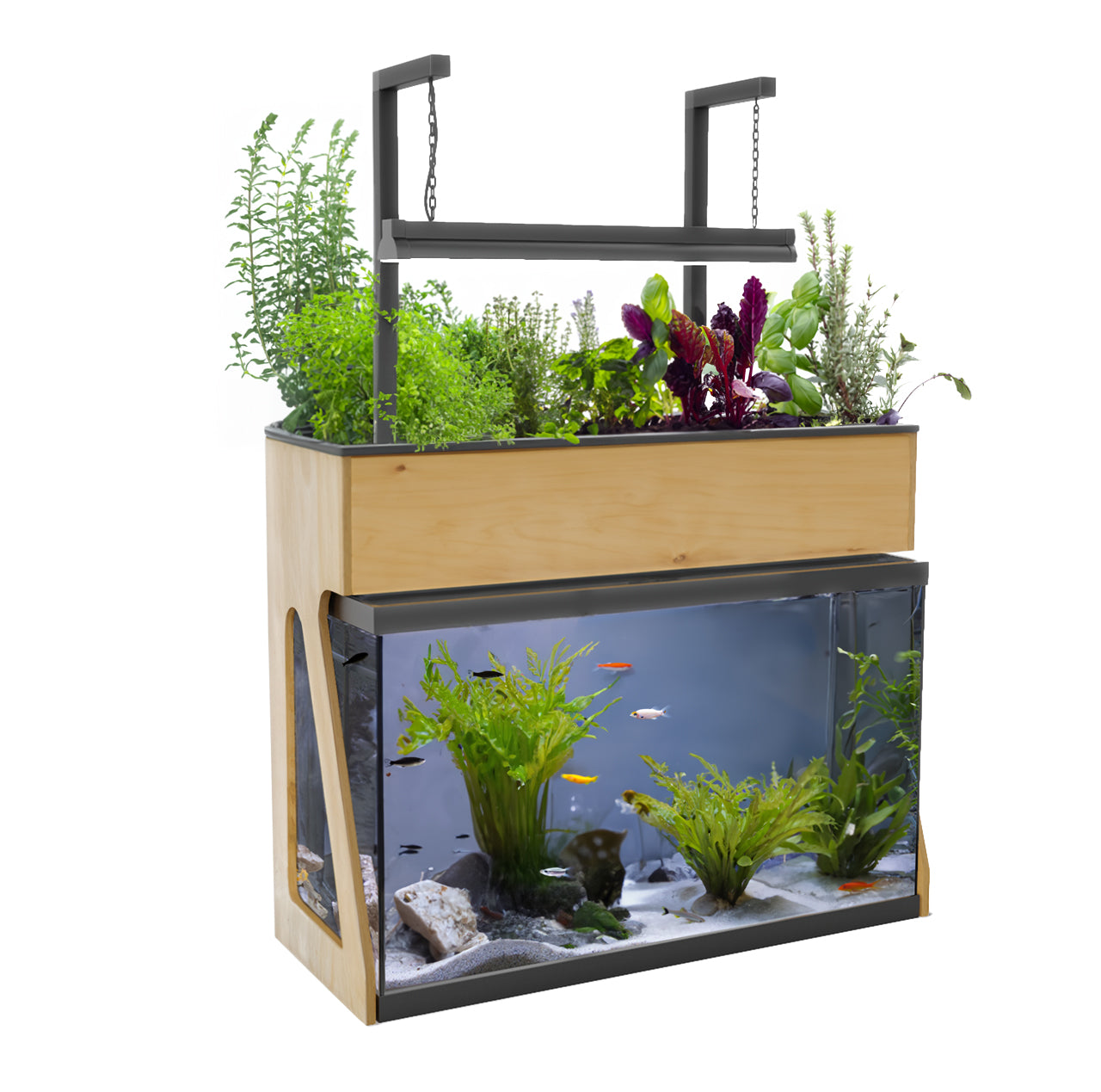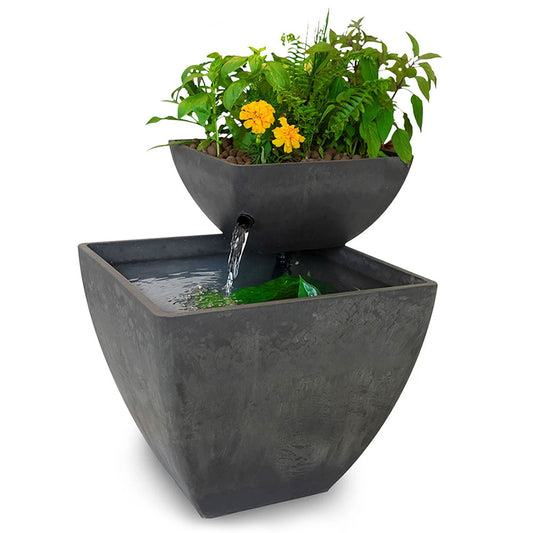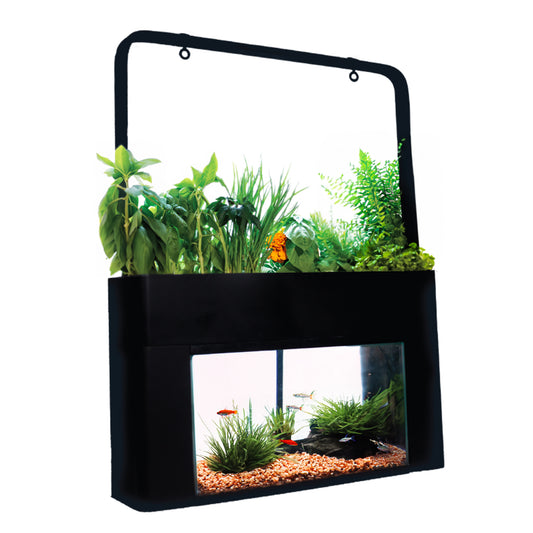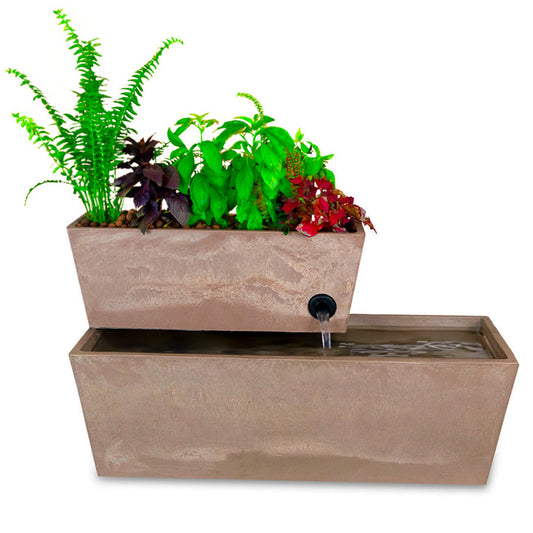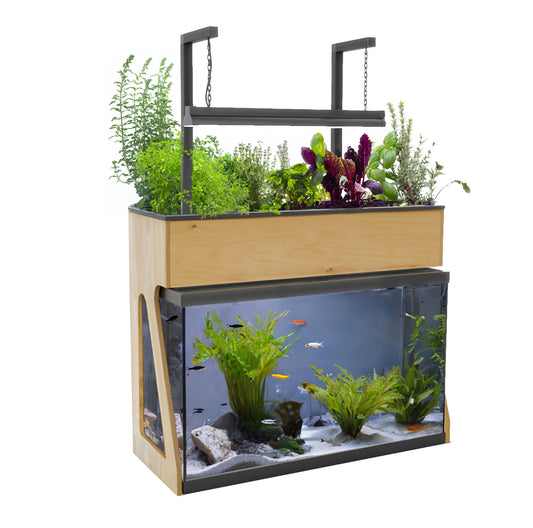Here at AquaSprouts, we want every planter to enjoy a successful harvest. While we see a lot of talk about ways to reduce maintenance and get more yield for less work, there's also something to be said for the often-overlooked but rewarding ways that you can give your garden a little more attention. Maintaining plants can be a gentle and relaxing, almost meditative act, and you'll be rewarded with healthier crops and better yields. Today, we're going to take a look at pruning: the counterintuitive art of removing pieces of your plants to encourage them to grow. Paired with good harvesting practice, pruning helps you keep your plants attractive and healthy while maximizing output.
A quick note for clarity: both pruning and harvesting vegetables involve removing bits of plants, and in fact, the two can sometimes be combined; but in general, pruning is trimming for the sake of encouraging growth, while harvesting is removing the parts that you want to use. Ornamental plants are often pruned even if they aren't going to be harvested.
Pruning your plant
Pruning protects the health of a plant, as well as controlling the height and

shape for the convenience of the gardener. In many plants, when a stem is removed at the buds between two leaves, two more stems will grow in its place. Instead of growing tall and narrow, plants are thus encouraged to grow outwards in a leafy bush. Pruning may also be performed repeatedly for the opposite reason; many gardeners remove internodal "suckers" on tomato plants, for example, to keep them straight and tidy instead of bushing out. This encourages the plant to devote more energy to fruiting instead of growth; since domestic tomato plants can also grow much larger than their stems can support, it helps prevent the plant from falling over or breaking under its own weight!
Tips for successful pruning:
- The earlier you start pruning, the more you will harvest in the long term.
- Never prune more than one third of the plant. Plants have a hard time sustaining themselves after the bulk of their leaves and stems have been removed. Be gentle with your plants!
- For outdoor crops, stop pruning eight weeks before hardening. (Hardening is the process by which plants are made ready for the winter months outside.)
- Wait until your plants have at least three sets of leaves on the stem before pruning them.
- Always use a sharp tool for pruning. Cleaner cuts are less likely to lead to infection. In small plants, pinch the stems of plants rather than tearing them off.
- While harvesting or pruning, remove the stems just above the leaves, so that the buds attached to the leaves will have a chance to grow.
- For bushier plants, remove the top 2 inches of the plant’s stem. This will cause the plant to grow out new stems laterally.
- Prune for efficiency: outwards to remove leaves blocking the light from inner growth, or inwards to remove inner growth that isn't receiving light.
- Different types of plants may require pruning at different points in their growth cycle. Herbaceous plants like oregano, chives, and mint, which die back in winter, will not require late-season pruning; prune them early in the growing season to control shape, and harvest at the end of the season. If you're growing indoors, prune and harvest as necessary to control growth.
- Woody and evergreen plants (which may or may not lose leaves but retain their stems and branches through the seasons) such as rosemary and sage should be pruned once a year at the beginning of the growing season.
- Some plants, such as dill and basil, will grow very quickly given enough light, and may require more frequent pruning and harvesting to maintain good health. These fast-growing plants are especially likely to go to seed, or bolt, if not kept pruned; herbs and vegetables which go to seed generally produce less vegetative growth, and may stop producing useful growth entirely or even sicken and die.
Harvesting your plant

A planter harvests a plant when it is at its peak flavor or scent. As with pruning, one must be careful not to remove too much of the plant when harvesting, or it won’t be able to sustain itself. "Lettuce" give you an example:
Salad greens are hardy and durable, and can withstand harvesting in multiple ways. One common practice is the “haircut” in which leaves are snipped off at the tops throughout the whole plant; this technique is quicker if you have a number of plants to harvest. Single leaf harvesting, where the more mature leaves are removed, and the younger leaves are left to grow, is a great way to manage a few plants, or to pick just a bit of greens for that day's salad. These techniques may be used on a variety of greens, such as arugula, kale, lettuce, and many similar leafy vegetables. It's important to harvest these kinds of plants regularly. Old growth on leafy greens becomes bitter, and many greens will bolt if not maintained, and once they bolt, they generally grow small, inedibly bitter leaves, so keep them trimmed and healthy if you want a sustained harvest!
There's always more to learn about the surprisingly complex life of plants, but we hope this gives you a useful start on a new technique that will help you keep a tastier and more beautiful garden. Thanks for stopping by, and happy growing!
